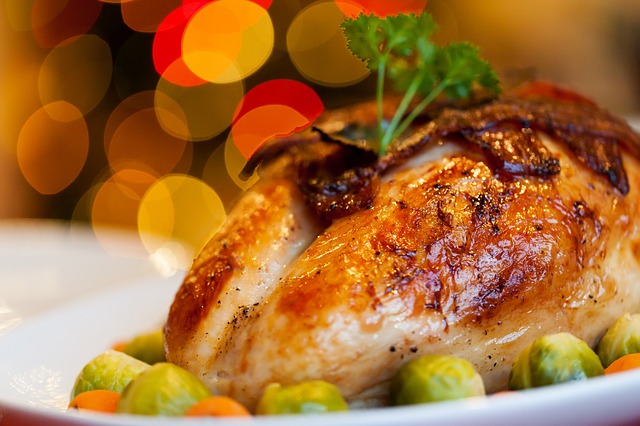
by Trish Adams | Dec 4, 2014 | Intuitive Eating, Nutrition
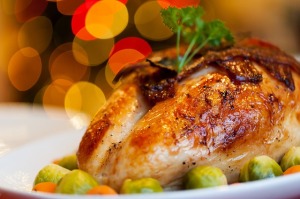 Holiday feasting always started early in our house. The cooking was complete by 9:00 in the morning and Thanksgiving dinner was served by noon. The menu was simple and has been the same for as long as I can remember. Once the feeding started, we continued until it was all gone – nothing was ever thrown out.
Holiday feasting always started early in our house. The cooking was complete by 9:00 in the morning and Thanksgiving dinner was served by noon. The menu was simple and has been the same for as long as I can remember. Once the feeding started, we continued until it was all gone – nothing was ever thrown out.
Post-Thanksgiving week went something like this:
Breakfast: Egg custard pie (It’s a southern thing!)
Lunch: Turkey, dressing + pie
Dinner: Turkey, dressing, string beans + pie
This pattern of eating lasted until we polished off each item (not surprisingly, mom’s 8 pies were always the first to go!). Then, we’d repeat the EXACT same scenario with the EXACT same meal at Christmas. The insanity of eating that way never really hit home until I was well into my thirties, as in a measly 5 years ago! I mean, it was the holidays and this meal was only prepared at this special time of year, so didn’t I deserve to cut loose? Never mind the fact that it took almost half the year to undo the damage from that 4-week period.
Even after changing my diet for the other 48 weeks of the year, I still accepted that during this period all bets were off and it was ok to eat this way because I could ‘work it off’. At some point it clicked that this kind of excess just didn’t jive with my lifestyle. Stuffing my face with all of those rich foods, meal after meal, day after day went against everything that I stood for – moderation, balance, nourishing my body and not being a slave to my taste buds. Nothing beats my mom’s holiday spread, but I can appreciate a single meal without putting an entire year’s worth of effort or my health in jeopardy.
One of the best things about this time of year is undoubtedly all the delicious holiday-themed treats and smells coming from the kitchen. Party invites are probably being thrown your way and you might already be wondering how you will enjoy the festivities without totally wrecking your progress. You will surely be tempted by tasty treats and delicious drinks while enjoying the company of family and friends and, by all means, should enjoy them. Use these holiday eating tips to indulge with moderation and avoid falling face first into the seasonal fat traps.
 Set Your Day Up in Advance If you already know that you will be enjoying a favorite treat, like my mom’s egg custard pie, make adjustments to the rest of your meals for that day. So, if some of your favorite foods are carb dense, eat less carbs throughout the day. The same practice can be applied to fats. Making adjustments to other meals will improve the overall macronutrient balance for the day.
Set Your Day Up in Advance If you already know that you will be enjoying a favorite treat, like my mom’s egg custard pie, make adjustments to the rest of your meals for that day. So, if some of your favorite foods are carb dense, eat less carbs throughout the day. The same practice can be applied to fats. Making adjustments to other meals will improve the overall macronutrient balance for the day.
Party Full- Another option to consider is having a healthy meal before you go. If you show up ravenous, you are more likely to make poorer food choices. Just like they say never go grocery shopping hungry, showing up to a smorgasbord with an empty stomach isn’t the best idea either. As if all the decadent desserts aren’t tempting enough, being around these things when you’re in need of food increases your likelihood of overindulging. Try eating some lean protein and a mix of fats and carbs before heading out.
Practice Moderation Living a healthy lifestyle doesn’t mean you can’t partake in the holiday’s bounty. Rather, it means you understand the importance of moderation and you practice it. Decide up front that you will indulge mindfully, eating the way you do the rest of the year with a treat or two added in. One approach you can take is to follow an 80/20 rule (80% healthier choices, 20% less than healthy). This way you won’t feel deprived of any foods, yet you won’t have to carry around the guilt or the pounds from overindulging.
Eat Slow & Stop Before Full This recommendation stands all the time, but doesn’t hurt mentioning again here. Although you may want to dive head first into the goodies, slow down your eating. If it is a once-a-year meal act like it and savor each and every bite. Not only will you appreciate the meal more, you will give your brain and gut time to communicate fullness and help you recognize when to stop eating. Once you start to feel full, you know it is time to stop.
 Forgive & Forget-If things don’t go according to plan and you somehow find yourself polishing off an entire pie (it has been known to happen!), let it go and move on. Listen, we’re all human, and as such we are fallible. There will be times we overdo it, but holding on to that guilt will do more harm than good. What matters is how you move forward. Acknowledge your overindulgence, try and figure out what triggered it, and carry on. Live in the present and let go of the past.
Forgive & Forget-If things don’t go according to plan and you somehow find yourself polishing off an entire pie (it has been known to happen!), let it go and move on. Listen, we’re all human, and as such we are fallible. There will be times we overdo it, but holding on to that guilt will do more harm than good. What matters is how you move forward. Acknowledge your overindulgence, try and figure out what triggered it, and carry on. Live in the present and let go of the past.
Remember What Food Is & Isn’t- Sometimes we find ourselves uncomfortable in a room full of people or relatives we are glad we only see once a year. Being stressed or nervous can increase your chances of eating one cookie too many. During these times, remember what food is and isn’t. Food is sustenance. It is not a problem solver. It’s not a friend to confide in. Mindlessly eating in response to an awkward or uncomfortable situation won’t solve any of your problems, it just creates a new one – overindulgence! See food for what it is and don’t let it be your crutch.
Whether fall and winter or spring and summer, these rules apply year-round. By sticking to the nutrition and exercise habits you’ve established and indulging mindfully, you can increase your chances of staying svelte through sweater season and ready to rock come summer. Always check in to the real meaning behind each holiday and recognize that it isn’t just about the food. Most importantly enjoy this time with your family and friends!

by Trish Adams | Oct 15, 2014 | Consistency, Intuitive Eating, Nutrition
 Many of today’s popular diets share a similar characteristic where you eat from a list of approved foods or food types and when you choose not to, you are cheating. Thankfully, it seems, a few diets are getting away from this notion of cheating such as flexible dieting and IIFYM, however, the practice of eating a cheat meal or having cheat days is still widely followed by those restricting their diets.
Many of today’s popular diets share a similar characteristic where you eat from a list of approved foods or food types and when you choose not to, you are cheating. Thankfully, it seems, a few diets are getting away from this notion of cheating such as flexible dieting and IIFYM, however, the practice of eating a cheat meal or having cheat days is still widely followed by those restricting their diets.
If what you eat on the weekend is drastically different from what you eat during the week, you are doing it wrong.
As you know, EM2WL does not endorse any specific diet, but we do make the following basic recommendations:
• Eat sufficient protein
• Eat sufficient fiber
• Eat enough food to meet your level activity
Pretty basic stuff, right? Nothing too scary and probably something most people can get with. Sure, there is more to it like balancing macros, whole vs processed foods, nutrient timing, staying hydrated, etc. but at a basic level, this is what it looks like.
My gripe with having a cheat meal has ZERO to do with the quality of the meal itself, but how the meal is labeled and the potential backlash it can have. The problem with labeling foods as cheats is that we are dangerously close to being right back at the good vs bad food mindset. As we’ve seen in the past, this often leads to putting foods on a restricted list, which can introduce binge eating and other forms of disordered eating.
Cheat: to practice fraud or trickery – Merriam Webster
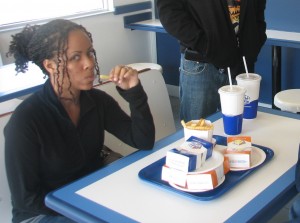 Think about this – When has cheating ever been associated with something positive? Cheat on a test? Bad. Cheat on your spouse? Bad. Cheating death? Ok, that is a good one, but even that seemingly good cheat has an ominous feel to it, like the grim reaper might be lurking around every corner to settle the debt.
Think about this – When has cheating ever been associated with something positive? Cheat on a test? Bad. Cheat on your spouse? Bad. Cheating death? Ok, that is a good one, but even that seemingly good cheat has an ominous feel to it, like the grim reaper might be lurking around every corner to settle the debt.
Labeling a meal as cheating implies some form of deceit and has negative overtones. I am a big believer that framing things positively impacts how you feel about it. Are you really “getting away with” eating a cookie, enjoying some pasta or anything that is not on the sanctioned food list? If so, maybe your diet is too restrictive. The reality is that you are just eating food. Period. There are no food police or other authority that you need to outwit or who is waiting to lock you up.
Food is food. Every food has a nutritional profile and you should gauge its value for YOUR diet and then make a determination if it is something that you want to eat often or in moderation. In general, eating foods that are more nutritionally dense AND that you enjoy is a good idea. Sprinkle in the foods that don’t offer as much nutritional value, but you simply enjoy eating. Maybe for you that is a 50/50 balance or an 80/20 balance. Whatever that balance is, it is your call to make, but avoid labeling foods in such a way that it may potentially trigger some guilt about eating it afterward.

by Trish Adams | Sep 1, 2014 | Fat Loss / Cutting, Intuitive Eating, Nutrition
In part 1 of this series we reviewed the basics of macronutrients and why each one plays an important role in your diet. While it’s important to understand what macronutrients are and how they function in your body, what most of us want to know is how to turn that into practical information we can use in our daily lives.
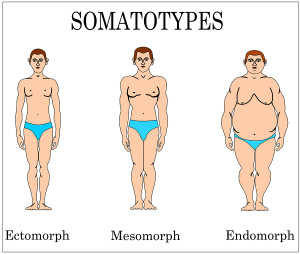 An approach often recommended and used by the EM2WL coaches is eating based on your body type. As with most things related to fitness, every body is unique and finding what works for you and your lifestyle takes some trial and observation. Two people with the same body type may have different diet histories, different external stressors, hormonal imbalances, etc. which may impact results even when eating the same diet. That being said, eating for your body type takes into account metabolic differences based on physical attributes and can guide you with your diet choices.
An approach often recommended and used by the EM2WL coaches is eating based on your body type. As with most things related to fitness, every body is unique and finding what works for you and your lifestyle takes some trial and observation. Two people with the same body type may have different diet histories, different external stressors, hormonal imbalances, etc. which may impact results even when eating the same diet. That being said, eating for your body type takes into account metabolic differences based on physical attributes and can guide you with your diet choices.
A somatotype, or body type as it is most commonly referred to, is a method of categorizing people based on their physique into one of three groups – endomorph, mesomorph, and ectomorph. It is believed that people with similar physiques share other characteristics, such as metabolism, which can inform one’s nutrition. Thus, determining your body type gives you a starting point with your macronutrient breakdown.
Ectomorph

Carbs, carbs, carbs!
Ectomorphs are naturally thin with smaller bone structures. Their metabolic rate is fast and they tolerate carbs well. You may think that having an ectomorph body type is like hitting the physique lottery, but it comes with its own set of challenges including being able to increase muscle mass or put on weight. For that reason, ectomorphs are also known as hard gainers. Because ectomorphs tolerate carbs well, they are prioritize in their diet.
For ectos, a good starting point would be: Carbohydrates 55%, Protein: 25%, Fat: 20%
Ok, I have to admit that having an ectomorph body type is definitely like hitting the food lottery!!
Mesomorph
Mesomorphs have athletic builds (i.e. V shape) with a medium bone structure. They are testosterone and growth hormone dominant which typically translates to more lean mass and lower body fat when active. Mesomorphs are generally able to eat what they want without encountering too many issues. They also aren’t too challenged when it comes to putting on or taking off weight.
Like ectomorphs, carbs are tolerated fairly well and play a starring role in a mesomorph meal plan: Carbohydrates 40%, Protein: 30%, Fat: 30%
Endomorph
Endomorphs have the largest bone structure and tend to carry more body fat as well as muscle mass. They tend to have pear shapes, gain weight easily and are often challenged when trying to lose weight. Endomorphs fair best with more fat and protein in their diet with carb intake kept at a moderate level and arranged around their activity.
pear shapes, gain weight easily and are often challenged when trying to lose weight. Endomorphs fair best with more fat and protein in their diet with carb intake kept at a moderate level and arranged around their activity.
An endomorphs’ intake might look like: Carbohydrates 25%, Protein: 35%, Fat: 40%
Choosing a Body Type Diet
If you’re wondering into which category your body falls or thinking that you could be categorized in more than one category, you’re probably right. Most people do in fact show characteristics of more than one body type.
Trying to fit perfectly into one category is not the goal here. Rather decide which category you feel you fit best in, choose the appropriate macro breakdown and adjust from there.  Undoubtedly many (primarily women) will try to fit into the endomorph category. Even classic ectomorphs will readily identify as an endomorph when trying to lose weight. However, I caution you NOT to immediately assume that your body type is endomorph simply because you are carrying “extra” body fat.
Undoubtedly many (primarily women) will try to fit into the endomorph category. Even classic ectomorphs will readily identify as an endomorph when trying to lose weight. However, I caution you NOT to immediately assume that your body type is endomorph simply because you are carrying “extra” body fat.
To help determine your body type, have a spouse or friend take a picture of you and compare the pic to the body type images (pictures are more objective than mirrors). You might be surprised to find which category you best align with.
Regardless of which category you best identify with, be sure to allow yourself sufficient time to evaluate how your body responds before making ANY changes. Then, once you feel you want to make an adjustment, start small and observe again. Over time you will determine what worked best for you and what didn’t.
Photo credit: Norbert Sobolewski, Egal, Ruthie, DenisNata/bigstockphoto.com

by EM2WL | Jul 29, 2014 | Binge Eating, Interviews/Guest Posts, Intuitive Eating, Nutrition

I recently heard dietician/nutritionist, Leslie Schilling, speak at the NSCA National Conference. She instantly wooed me with her Southern drawl, love of food, and “anti-diet” approach (a dietician against diets?! What’s not to love?). Of course, I commenced to immediate stalking, and cornered her for an interview ;) ~Kiki
EM2WL: Your session at the conference “When Diets Don’t Work” focused on Binge Eating Disorder (BED). Can you explain to our readers what BED is?
Leslie: A diet, whether it is the first or fiftieth, could be the trigger to a life-altering or even life-threatening eating disorder. According to the National Eating Disorders Association, these illnesses can affect people of any race, age, sex, or size. Last year, the most common yet under recognized disorder received an official diagnosis code. Now those suffering with BED can no longer be overlooked. BED is associated with the following signs: recurrent binging (once a week for more than 3 months), eating larger than normal amounts of food in a short period of time, and lack of control during the binge episode. According to the Binge Eating Disorder Association, BED may affect 3.5% of women, 2% of men, and as many as 40% of all those seeking weight loss treatments.
EM2WL: Other than lack of purging/excessive exercise, what separates BED from Bulimia and Anorexia?
Leslie: There is no compensatory behavior like over exercising, restricting or “getting rid” of food (purging in any way).
EM2WL: I wonder if it is possible to have this disorder and not know it. A lot of people refer to “cheat meals,” justifying overeating on the weekends after “being good” all week. Does this type of diet mentality have any bearings on developing BED?
Leslie: Yes, it is possible to have BED and not realize it. Dieting over the years, as well as a common culture of “diet-mentality,” may mask an underlying problem. Many of us overeat from time to time, and even eat when we are not hungry. Those with binge eating disorder, however, eat for reasons not always associated with hunger. For example, people suffering from BED may use food to reward themselves, or to escape emotions associated with grief or anxiety, stressful situations, anger, hurtful memories or even past traumas.
My philosophy about “cheat meals” is simple. If what you’re doing requires that you “cheat,” I don’t believe it’s a sustainable or healthy. You could absolutely be eating better than you once did, but perspective matters. I believe in an 80/20 approach which I define as eating whole and low-ingredient foods most of the time and comfortably blending it with pleasurable foods that may or may not have a high nutritional value. Like, I have this thing with cupcakes…
My philosophy about “cheat meals” is simple. If what you’re doing requires that you “cheat,” I don’t believe it’s a sustainable or healthy.
EM2WL: Would you consider an overindulgence, say eating an 2 or 3 servings of a favorite dessert, a binge? How can we distinguish between an overindulgence v a binge?
Leslie: It’s possible I could eat two cupcakes here and there. I likely over-indulged and won’t do that again for a long time. A binge may look like 4, 6, or even a dozen cupcakes but it really depends on the person and the motivation.
Here’s an example—If I eat an extra cupcake because Aunt Betty makes amazing strawberry cupcakes, it may be a simple indulgence. If I’m eating 2, 4, etc.. of Aunt Betty’s cupcakes because my boss said something horrible to me—I’m “using” food and therefore, potentially binging.
EM2WL: The term ’emotional eating’ is used quite a bit with regard to challenges faced when trying to lose weight. Is this just another label for BED?
Leslie: Normal eaters sometimes eat for emotional reasons vs. physiological hunger. However, when you find yourself eating for reasons other than hunger frequently, it’s possible there could be some form of disordered eating going on, like BED.
If someone is over “using” food, it’s possible to teach them the tools to recognize and redirect those behaviors. Once they improve those behaviors, it’s very likely that weight loss becomes a side-effect.
EM2WL: You mentioned that if the shame-based approach worked, that the problem might not be as widespread. How does the media, trainers, friends, or parents contribute to the shame-based approach to fat loss? And how does that play into BED?
Leslie: Many of us who work in the field of disordered eating say “if shame worked, no one would have a weight issue.” Making someone feel bad about themselves is NEVER productive. Our “war” on obesity has become a war against people, real people, like you and me, with real life problems. I like to think you catch more flies with honey. Being caring and non-judgmental opens the door to sustainable change. Here’s one of my favorite quotes.
Nobody really gets anywhere “shouldn’t’” on themselves. When we feel the pressure to change things like our bodies, our diets or exercise routine, it’s important that trainers, dietitians, parents, health professionals, etc… use an approach that moves someone towards making healthy decisions for themselves. I rarely support someone’s goal of “weight loss.” I discuss what’s going on with their food, lack of food, over “use” of food, and help them set goals that promote lasting healthy behaviors. If someone is over “using” food, it’s possible to teach them the tools to recognize and redirect those behaviors. Once they improve those behaviors, it’s very likely that weight loss becomes a side-effect.
EM2WL: If someone suspects they might have BED is there anything they can do on their own to treat the disorder?
Leslie: It’s unlikely, yet not impossible. It’s about the food and NOT about the food at the same time. A successful team usually includes an experienced mental health professional along with an experienced dietitian (one who works with BED/emotional eating).
If you’re wondering if you may need a little help, you can absolutely start by helping yourself. Keeping a food journal (no calories, numbers, etc) to record when you eat, what you eat and how you’re feeling (am I hungry, angry, lonely, tired?). An individual non-judgmental investigation of how you’re using food can provide tremendous insight.
EM2WL: As a dietitian, what do you feel the biggest flaw is in the “eat less, workout more” philosophy?
Leslie: If it were as simple as eat less, work out more, I think most every person on the planet would have mastered the food and weight thing by now. We often assume it’s all about energy in and energy out. It’s not really when you think about all the other factors that influence our body weight & eating—emotions, endocrine issues, body types, dieting history, fitness levels, and so on…
I love giving this example. Say you have a 50 calorie snack and a 150 calorie snack. If you’re simply eating based on a quantity (calorie) approach, it’s very possible you’ll pick the fat-free, sugar-free chemical soufflé. If you eat based on a quality approach, you’re more likely to pick the higher energy choice—almonds—ingredient: almonds.

EM2WL: You have a new dinner menu service launching soon, deets please!! What awesomeness should we expect from Your Supper Solution?
Leslie: I’m incredibly excited about this launch! Earlier this year I’d enrolled in a business development course because I needed direction for my next steps as an entrepreneur. As you know, I’m a registered dietitian/nutritionist but I was stuck. This desire to do something that could positively impact people on a larger scale was really eating at me. I didn’t know if I needed to focus on expanding my private practice, speaking engagements, write a book, or what. The lack of clarity was incredibly frustrating.
As I was doing my homework (which I loved because I’m a total geek), it came to me. I rock planning a menu like nobody’s business and I realized that planning has been a major part of what I’ve been helping people with for the last 10 years.
Many people can cook, follow a recipe and shop but most HATE the planning. So, I’ve created Your Supper Solution—an online monthly membership service that delivers weekly dinner menus. It’s a balanced, back-to-basics, real food approach to getting supper solved! Menus roll out August 1st! Here’s a quick video about it.
EM2WL: Sweet! You know I’m already on the pre-launch list, lol. Where else can our readers read/see/hear more from you?
Instagram: http://instagram.com/leslieschilling
Facebook: https://www.facebook.com/NutritionLeslie
Twitter: https://twitter.com/NutritionLeslie
Pinterest: http://www.pinterest.com/leslieschilling/
Meal Planning Website: www.yoursuppersolution.com
Memphis-based Private Practice Website: www.schillingnutrition.com

Leslie Schilling
Leslie is a master’s level, registered, and licensed dietitian/nutritionist who specializes in wellness, disordered eating, sports nutrition, and the prevention of chronic dieting. She received her Bachelor of Science and Master’s degrees from Appalachian State University in NC. Leslie owns Schilling Nutrition Therapy, LLC, a Memphis-based nutrition counseling practice, and is the creator of Your Supper Solution.
She is a member of Sport, Cardiovascular and Wellness Nutrition (SCAN), Behavioral Health Nutrition (BHN), Nutrition Entrepreneurs (NE) Practice Groups of the Academy of Nutrition and Dietetics (AND), the National Strength & Conditioning Association (NSCA), the Eating Disorders Coalition of Tennessee (EDCT), and The National Speakers Association (NSA).
Leslie has served as an adjunct instructor in the Graduate Nutrition Program at the University of Memphis. She has also been invited to provide her humorous, down-to-Earth nutrition programs and presentations to groups and professionals across the nation. In addition, she writes for local media, professional, and consumer publications. Whether it is through appearing on a television show, speaking to a crowd, or writing, Leslie inspires those she encounters to get back-to-the-basics with food and make self-care a priority through planning.
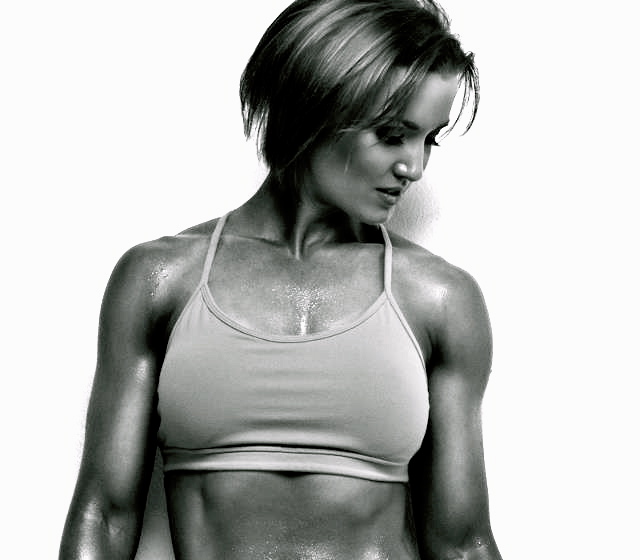
by Trish Adams | May 7, 2014 | Former Fitness Competitors, Interviews/Guest Posts, Intuitive Eating, Nutrition, Self Acceptance

Dani Shugart
After following Dani for some time, I was so excited to finally have an opportunity to get into her head a bit deeper. This figure competitor knows firsthand the dangers of disordered eating and helps her clients break the cycle and rebuild their relationship with food.
EM2WL: Thanks again, Dani, for agreeing to be interviewed. Just to give everyone a brief background, you started lifting in high school which led to competing and winning several competitions, most recently taking first place in novice and third place in open at this year’s Axis Labs Northern Colorado’s figure competition. You’ve also authored several articles and recently published The Sound of Secrets: End Disordered Eating, recounting your sister’s battle with the disease. Why did you feel the need to write this book?
Dani: I wrote this book after losing my big sister. She struggled with anorexia for nearly two decades, and a few months after her death it occurred to me that my sister’s struggle, though extreme, started somewhere fairly benign, at a place where a lot of women find themselves now.
I wrote the book to stop women (and men) from going down that same route, and to help them break out of the eating habits that make them feel and look miserable.
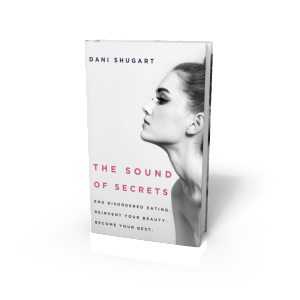 E: In your book you labeled disordered eating as the new normal. How do you think society has come to this state?
E: In your book you labeled disordered eating as the new normal. How do you think society has come to this state?
D: I don’t know if we can blame any one thing. It would be easy to point the finger at Photoshop, the media, and the underrepresentation of strong, healthy bodies. But I think it’s more complicated than that.
I have to wonder if the rise in disordered eating is just a backlash (a strong and adverse reaction) to the rise in obesity. Maybe people are just trying to avoid becoming the norm but going about it in counterproductive ways. There’s a general misunderstanding about how to be lean and healthy for the long haul.
Another thing that might have something to do with it is the increasing availability and consumption of hyperpalatable, processed foods. The salt/sugar/fat trifecta makes a lot of people compulsive overeaters. (It had that effect on me.) And when people want to be thin, yet become addicted to foods that do the opposite, they resort to compensatory actions instead of building a healthier relationship with foods that nourish.
Any level of disordered eating is a thief of our happiness, sanity, health, time, self respect, and potential.
E: Do you feel that many of today’s popular diets like paleo or IF contribute to the problem? What are your thoughts on IIFYM?
D: I think modern diets are just a symptom of a problem that’s already there. Sure, they can contribute to it and overcomplicate it, but diets are not where the problem begins. The problem begins in the mind, and it begins with our perception of what will make us healthy, fit, lean, and happy long term. Those who are obsessed with weighing less at the expense of their health are at risk for disordered eating, no matter what diet they subscribe to.
IIFYM (like many dieting strategies) can be beneficial or harmful depending on what your mindset is when using it. If you’re really focused on nourishing yourself then it can be used for good. It has its place, but it’s not a way of life. Counting and measuring everything you eat for your lifetime is insanity. Are you going to take scales and measuring cups with you everywhere you go? At some point you have to trust your ability to eye-ball an appropriate amount of food, and then eat according to your hunger. At some point you have to trust that your metabolism will work in your favor and use everything you consume.
Another thing — avoiding hyper-palatable food, the stuff that’s engineered to make you eat more, is a good idea. But I don’t see that as dieting, just self-defense. And filling your body up with what you know will nourish and satiate, is the best way to take care of yourself and become leaner in the process. No diet necessary.

E: When most people think of disordered eating, images of purging or extreme restrictive dieting come to mind. Would you consider behavior where someone regularly over indulges on the weekend and then tries to ‘burn it off’ or restrict calories afterward to be disordered eating?
D: Yes, this is definitely disordered. Anytime you overindulge and then try to compensate for it, you’re engaging in what I described in the book as the “binge-punish” cycle.
When working with clients, I also refer to it as the Good Girl/ Bad Girl cycle or Good Boy/Bad Boy cycle. People perceive their behavior as “bad” when they lose control, and then they perceive their behavior as “good” the next day when they try to undo the damage. A lot of folks go through this cycle every single day and don’t realize it’s disordered… all they see is the weight gain that happens as a result. So when I work with clients who are want to lose weight we have to address this cycle first.
E: In your book you describe the 5 phases of the binge-punish cycle which start with highly addictive engineered foods and ends with bingeing. What are some ways people can break this cycle?
D: There are so many ways to break the cycle and they all depend on the person. But here are three that I often use with clients:
Breaking the cycle begins when you have the most control. If you end the day famished and tired, you’ll be more likely to default to whatever behavior is easiest or most habitual. This often means choosing the most convenient food – whatever it may be. So if you’re used to eating food that makes you crave more, you’re going to grab that in a moment of weakness. To break the cycle, nourish yourself early and often, and you’ll prevent the need to reach for things that don’t serve you.
 Another way to break the cycle is just to make sure that your (home and work) environment accommodates it. Make sure you have healthy go-to foods available everywhere you are so that even if you are tempted to seek foods that trigger more eating, you have another easily available option.
Another way to break the cycle is just to make sure that your (home and work) environment accommodates it. Make sure you have healthy go-to foods available everywhere you are so that even if you are tempted to seek foods that trigger more eating, you have another easily available option.
Another way to break the cycle is to find out why you’re eating. Is your reason for eating physical or psychological? Check in with yourself and ask, “Am I eating this because I’m really hungry, or am I looking for a distraction and mental relief?” Strong emotions can start the cycle, and if you can get down to the bottom of WHY you’re reaching for food in the first place, then you can begin to establish strategies to deal with these emotions aside from food.
E: How important is it to have self compassion when trying to break free from disordered eating?
D: Self compassion doesn’t come naturally for most of us because we operate under the assumption that if you’re hard on yourself you’ll be more successful. This is a giant misconception and I think it’s what keeps people locked in their disordered eating.
Fighting against yourself instead of fighting on the same team makes it much harder to reach your goals. Once people really grasp this, they’re able to help themselves and break free. Self compassion is getting on your own team, and I think it’s essential for success.
For those that are suffering from disordered eating what are some steps they can take toward rebuilding their mindset about food?
Seek understanding. Find resources (books, coaches, articles, other people) that can help you change your mindset. Focus on changing your thinking and behavior instead of your macros and calories.
Women tend to get excited by weight loss no matter how it’s accomplished.
E: Fitness and strength training have obviously been a big part of your life. At EM2WL we encourage women to lift heavy weights and often run into the ‘fear of getting bulky’ objection. What do you say to women when faced with a similar concern?
 D: This is one of my favorite things to address. If you’re trying to change your disordered eating you have to change your disordered thinking. See if you can let go of the smallness goal because ironically, the strategies that make you weigh less initially are the same exact ones that either backfire and make you gain weight in the long run, or enslave you in a life of wasting away.
D: This is one of my favorite things to address. If you’re trying to change your disordered eating you have to change your disordered thinking. See if you can let go of the smallness goal because ironically, the strategies that make you weigh less initially are the same exact ones that either backfire and make you gain weight in the long run, or enslave you in a life of wasting away.
When you lose weight without building muscle you become a “smaller” person. And as such, you have to eat fewer and fewer calories (otherwise you’ll go right back to the same weight you were). But muscle changes that. It makes you expend more energy, and it requires you to consume more energy to grow.
Muscle not only ups your metabolism it also makes you look leaner. No matter how much weight you’re carrying, muscle will change the shape of your body like nothing else. And in order to have muscle definition, you have to have muscle. There’s no way around it.
E: Thanks again Dani! How can our readers hear more from/follow you?
D: Thanks for letting me share! Get in touch! Here’s where you can find me:
Website: http://www.goodgirlfitness.net
Facebook: https://www.facebook.com/GoodGirlFitness?ref=hl
Twitter: https://twitter.com/DaniShugart
Instagram: http://instagram.com/danishugart
Photos credit: www.bigstock.com
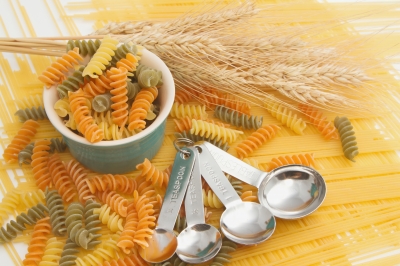
by EM2WL | Apr 11, 2014 | Intuitive Eating
Q: I’ve been tracking my food and counting my macros for about a year now. I’m loving the results I’m seeing, but weighing and measuring everything, counting calories and reading labels sometimes makes me feel a bit obsessive, even though I know I’m eating plenty. Do I have to track my food indefinitely?
A: Absolutely not! In fact, one of our goals for you is to learn to eat intuitively!
EM2WL doesn’t recommend calorie counting as merely a way of restricting food, but rather as a means to determine if you are eating ENOUGH! Using a calorie counter like My Fitness Pal can be a great tool for educating yourself about the calorie and macronutrient breakdown of different foods. It doesn’t take long to familiarize yourself with proper portion sizes and an understanding of setting up meals that will help you reach your macro goals by the end of the day. Many of our clients that begin tracking their food are surprised to learn they are eating far too little.

Photo credit: Stuart Miles
The ultimate goal of tracking food, however, is to trust yourself enough to eat intuitively, even without the security of tracking every macronutrient. Keeping a food log provides an opportunity to educate yourself about how to adequately fuel your body. After a short time period, you are likely to find the best way to set up your meals to reach your daily macronutrient goals. You will probably find what foods make you feel your best, and which foods you’d be better off avoiding or eating less frequently. You will probably find that for the most part, the staples of your eating plan are fairly similar from day to day.
If you’re used to keeping pretty accurate food logs, it can feel pretty overwhelming to make the journey to intuitive eating, but it’s well worth it in the long-term. Instead of an all-or-nothing approach, think about implementing small baby steps with the long-term goal being eating intuitively.
1. Keep a food journal, but don’t count calories
If you’re afraid that a break from logging will turn into an all-holds-barred eating fest, keep yourself accountable by keeping a food journal while you make the transition. Don’t worry about writing down amounts, but do jot down times and foods consumed, along with a few notes about how different meals make you feel. Are you satisfied after each meal? Struggling with emotional eating? Notice you don’t feel so hot after a particular meal? Struggling to get through workouts? All these observations can help you to make informed decisions about making a few simple tweaks to your eating plan.
2. Listen to your hunger and fullness cues
In addition to paying attention to how different meals make you feel, make sure that eating when you are hungry and stopping when you are satisfied, but not overstuffed. This may seem too obvious and simple to even mention, but for those who have spent a long time dieting, counting calories, and/or eating at specified times, it can be difficult to discern when you are hungry and full.
3. Log late in the day
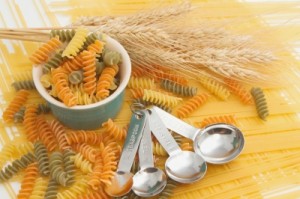
Photo credit: Praisaeng
Another approach that can be helpful is to eat intuitively throughout the day and then check how you’ve done once you’re done eating for the day. You may choose to continue to weigh and measure foods during this transition, but remember the ultimate goal is to rely less on weighing and measuring foods and learn how to trust yourself to make decisions about food choices and portion sizes. It may be helpful to continue to weigh and measure “big ticket” items like fats and starchy carbs during this time, and eyeball things like lean meats, fruits, and vegetables since they have less potential to be overeaten.
The following rule of thumb might be helpful to remember:
1/2 cup rice or grains=1/2 baseball
1 1/2 ounces cheese=4 game dice
2 tablespoons nut butter=1 ping pong ball
3 ounces lean meat=deck of cards
1/4 cup dried fruit or nuts=1 large egg
1 tablespoon butter=1 game dice
1 cup cereal=1 fist
Bodybuilding.com also has a pretty awesome visual guide for eyeballing your macros.
4. Check your “eyeballing” occasionally
Occasionally, after you’ve already portioned your food, check in with your digital food scale to make sure you’re still on track. Hopefully, you will be pleasantly surprised that your portion sizes are pretty spot-on! If not, a few days of getting back to weighing and measuring should get you back on the right track.
5. Take a short break from logging
If a break from logging food makes you extremely uncomfortable, consider taking just one or two meals per week off. Over time, you might be able to extend this time into a full day, and over time you are sure to find that you are trusting yourself more and more comfortable with eating intuitively.
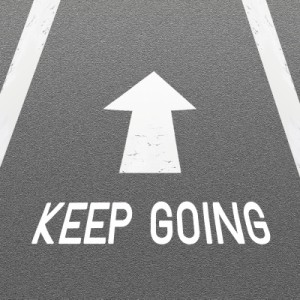
Photo credit: lamnee
6. Don’t give up!
Be patient with yourself and forgive yourself if you run into some bumps along the road. Those things that are truly worth it in the end rarely come without a few obstacles. Ultimately, you are sure to enjoy the freedom you find from being able to eat intuitively. If you seem to be struggling to stay on track, you can always go back to logging for a few days. Remember there’s no time limit here and this is your journey! You can take as much time as you need to accomplish your goal. We look forward to hearing your success stories!
Becca is a busy mother five children ages 9 to 17. About seven years ago, she embarked on a journey to health and fitness that resulted in the loss of approximately 100 pounds. Today, she is a competitive powerlifter and strongwoman who loves ice cream and deadlifts. As an ISSA certified personal trainer, she is passionate about helping women to get started on a lifestyle of strength and fitness.
All photos credit of www.freedigitalphotos.net

 Holiday feasting always started early in our house. The cooking was complete by 9:00 in the morning and Thanksgiving dinner was served by noon. The menu was simple and has been the same for as long as I can remember. Once the feeding started, we continued until it was all gone – nothing was ever thrown out.
Holiday feasting always started early in our house. The cooking was complete by 9:00 in the morning and Thanksgiving dinner was served by noon. The menu was simple and has been the same for as long as I can remember. Once the feeding started, we continued until it was all gone – nothing was ever thrown out. Set Your Day Up in Advance If you already know that you will be enjoying a favorite treat, like my mom’s egg custard pie, make adjustments to the rest of your meals for that day. So, if some of your favorite foods are carb dense, eat less carbs throughout the day. The same practice can be applied to fats. Making adjustments to other meals will improve the overall macronutrient balance for the day.
Set Your Day Up in Advance If you already know that you will be enjoying a favorite treat, like my mom’s egg custard pie, make adjustments to the rest of your meals for that day. So, if some of your favorite foods are carb dense, eat less carbs throughout the day. The same practice can be applied to fats. Making adjustments to other meals will improve the overall macronutrient balance for the day. Forgive & Forget-If things don’t go according to plan and you somehow find yourself polishing off an entire pie (it has been known to happen!), let it go and move on. Listen, we’re all human, and as such we are fallible. There will be times we overdo it, but holding on to that guilt will do more harm than good. What matters is how you move forward. Acknowledge your overindulgence, try and figure out what triggered it, and carry on. Live in the present and let go of the past.
Forgive & Forget-If things don’t go according to plan and you somehow find yourself polishing off an entire pie (it has been known to happen!), let it go and move on. Listen, we’re all human, and as such we are fallible. There will be times we overdo it, but holding on to that guilt will do more harm than good. What matters is how you move forward. Acknowledge your overindulgence, try and figure out what triggered it, and carry on. Live in the present and let go of the past.






















Recent Comments